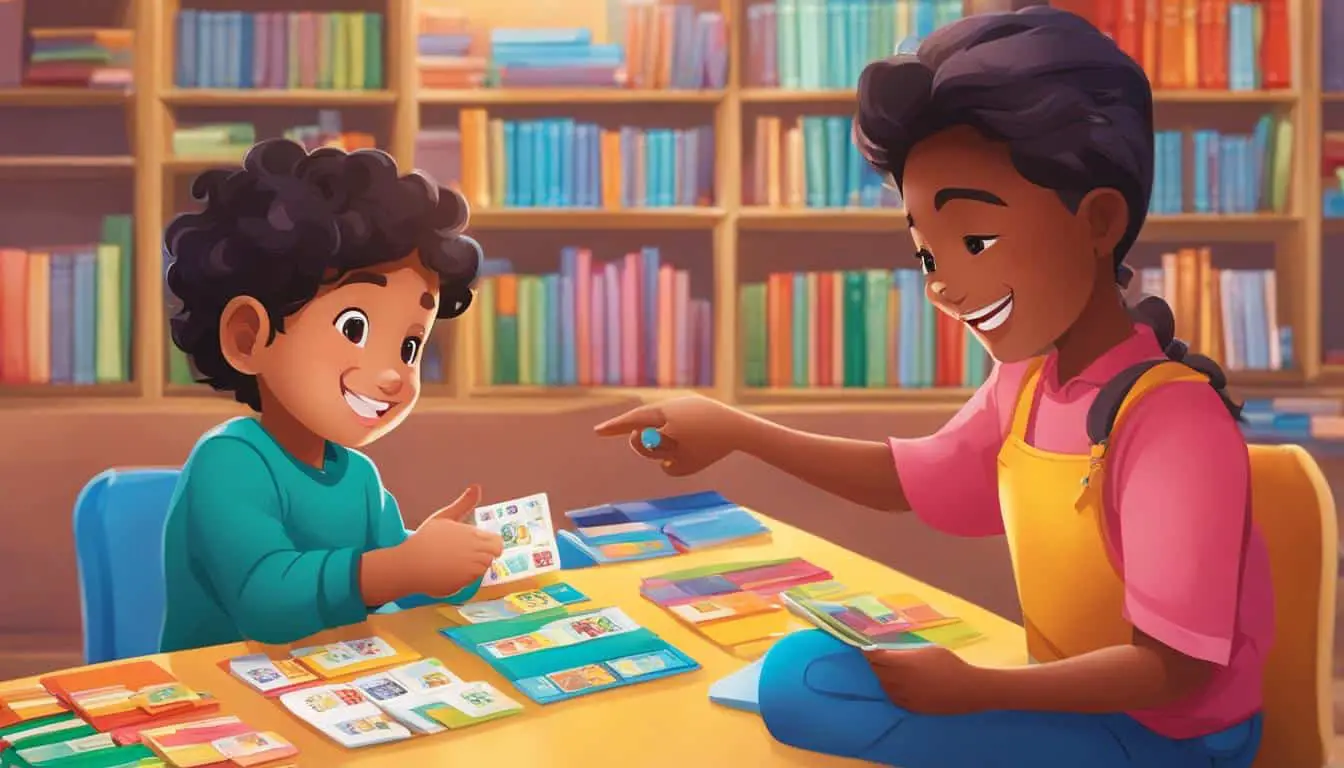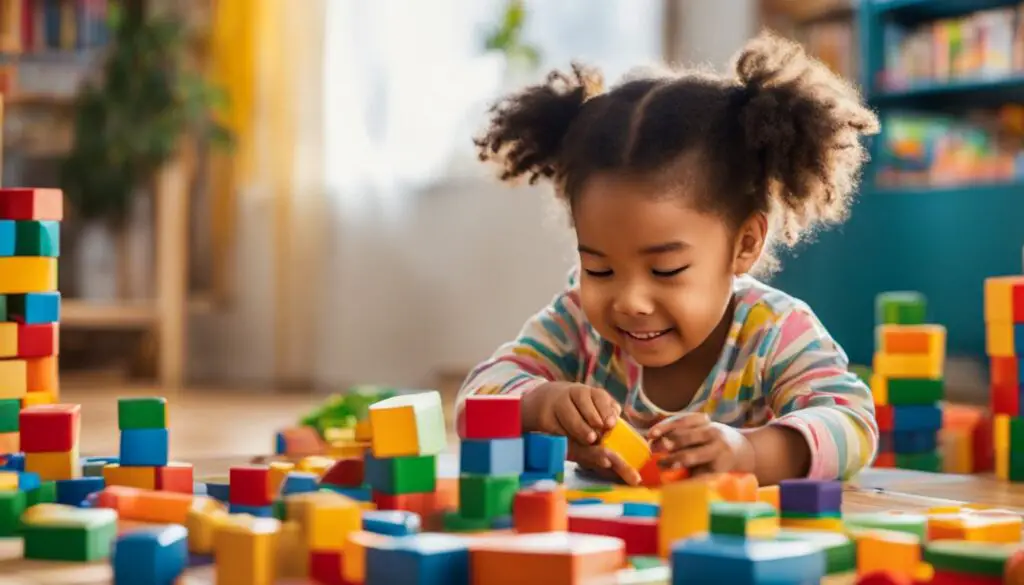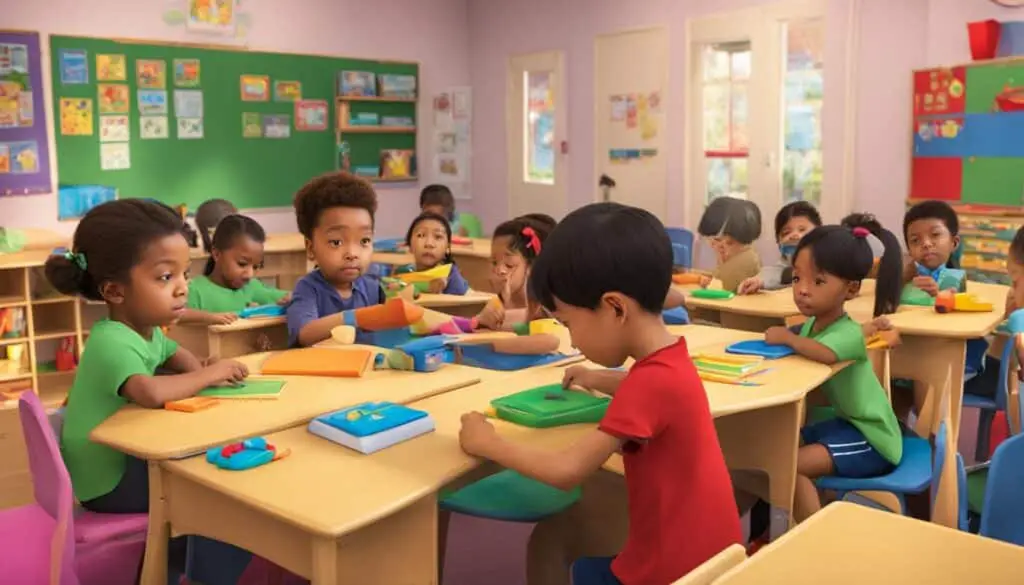
Supporting Bilingual Development in Children: Techniques and Tips
As the world becomes increasingly interconnected, the ability to speak more than one language is becoming more and more valuable. Bilingualism can offer cognitive and social advantages to children, making it a desirable skill to foster from a young age. However, raising bilingual children can also present unique challenges. That’s why in this article, I will introduce you to various techniques for supporting bilingual development in children. Whether you’re a parent, caregiver, or educator, these tips will equip you to help children achieve their full potential in both languages.
Key Takeaways
- Bilingualism offers cognitive and social benefits to children.
- Creating a language-rich environment is key to supporting bilingual development.
- Play is a powerful tool for promoting language development in bilingual children.
- It’s important to maintain a balance between the two languages.
- Supporting language development in school involves partnering with teachers, participating in bilingual programs, and utilizing language support resources.
The Benefits of Bilingualism in Children
There are numerous benefits of bilingualism in children, far beyond the ability to fluently speak multiple languages. Research has shown that being bilingual can improve problem-solving skills, enhance cognitive flexibility, and promote cultural understanding, among other advantages.
One study found that bilingual children exhibited greater mental flexibility and were better at multitasking than monolingual children, which can be attributed to the constant need to shift between two languages. Additionally, bilingual children have been shown to have improved executive function, which allows for better decision-making and problem-solving abilities.
Bilingualism also allows children to appreciate and understand different cultures and perspectives, fostering a sense of empathy and connection to the world around them. This can be invaluable in an increasingly globalized society where intercultural communication is becoming more and more important.
In short, exposing children to multiple languages has the potential to greatly enhance their cognitive development and overall understanding of the world.
“Being bilingual is an asset, and we need to start viewing it as such. It’s an advantage and it will only benefit our kids in the long run.”
– Sonia Manzano
Creating a Language-Rich Environment
One of the most effective ways to support bilingual development in children is by creating a language-rich environment. This involves exposing children to a variety of language experiences at home or in educational settings. Here are some practical ways to create a language-rich environment:
Expose Children to Books in Both Languages
Reading to your child and providing them with books in both languages can foster a love of language and learning. Encourage children to choose books they enjoy, and make time to read together as a family.
Use Music to Promote Language Development
Playing songs and singing nursery rhymes in different languages can be a fun and interactive way to promote language development. Kids can learn new words and expressions while enjoying the music.
Encourage Conversations in Both Languages
Having regular conversations with children in both languages can help them develop their communication skills and build their vocabulary. Whether it’s during mealtime or playtime, encourage your child to communicate in both languages and provide positive feedback.
A language-rich environment provides bilingual children with the resources and opportunities to learn and practice their languages.
Promoting Language Development Through Play
As a bilingual child develops language skills, play can be an excellent tool to stimulate their cognitive growth. Engaging in imaginative play and language-based games can foster vocabulary expansion, sentence structure, and communication skills, all while having fun.
Speaking with children during playtime can create opportunities for verbal interaction, providing them with new vocabulary and language structures to learn. For example, playing “house” or “restaurant” in both languages can introduce them to new words related to daily routines, food, and household items, increasing their exposure to essential language concepts.
I find that incorporating playtime into language learning is not only effective but enjoyable for both the child and me. It allows me to connect with the child on a personal level while also stimulating their language skills.
In addition, language-based games can be integrated into playtime to further their language development. For instance, games like “I Spy” and “20 Questions” can encourage children to use descriptive language, promoting vocabulary expansion and improving sentence structure.
| Games to Promote Language Development Through Play | How They Help |
|---|---|
| Memory | Improves memory and encourages focus and attention to detail |
| Guess Who | Encourages descriptive language and questioning skills |
| Charades | Fosters non-verbal communication and language use in context |
Using play as a tool to promote language development can create a positive and enjoyable environment for bilingual children while supporting their cognitive development and language skills.

Supporting Language Development in School
When it comes to supporting language development in bilingual children, the school environment plays a crucial role. As a parent, there are several strategies you can implement to ensure your child’s language skills continue to develop and thrive while at school.
Partnering with Teachers
Work with your child’s teachers to establish open communication and collaboration. Encourage them to use both languages when communicating with your child, and inquire about ways you can support your child’s language development at home. Review your child’s progress regularly with the teacher and discuss any concerns or challenges.
Participating in Bilingual Programs
Many schools offer bilingual programs that provide children with opportunities to practice and develop their language skills in both languages. Encourage your child to participate in these programs and attend any related events or activities. This will not only support their language development but also help them appreciate and embrace their bilingualism.
Utilizing Language Support Resources
Take advantage of any language support resources available at your child’s school. These may include tutoring, speech therapy, or language-specific classes. Work with your child’s teachers and school staff to identify which resources would be most beneficial for your child.
Remember, it takes a village to support bilingual development in children, and the school is a critical part of that village. By partnering with your child’s teachers and utilizing available resources, you can ensure your child’s language skills continue to develop and flourish.

Maintaining Language Balance
As bilingual children navigate two languages, it is essential to maintain a balance between them to ensure they develop proficiency in both. Here are some tips to help maintain language balance:
- Consistency in language use: Encourage consistent use of both languages at home, with family and friends, and in educational settings.
- Establishing language routines: Designate specific times and activities for using each language regularly, allowing children to practice and balance their language skills.
- Embracing a positive attitude towards bilingualism: Celebrate the cultural richness that bilingualism brings, and avoid discouraging or favoring one language over the other.
“Maintaining language balance is pivotal in helping bilingual children develop strong language skills in both languages and preserve their cultural identity” – Dr. Maria Rodriguez, Bilingual Education Specialist
Conclusion
In conclusion, supporting bilingual development in children through techniques such as creating a language-rich environment, promoting language development through play, and maintaining language balance is essential for their overall development. As a journalist and a parent, I highly recommend exposing children to multiple languages to improve their cognitive flexibility and cultural understanding.
It is important to remember that each child’s language journey is unique and may require different strategies. However, by partnering with teachers, participating in bilingual programs, and utilizing language support resources, parents can create a language-rich environment that fosters their child’s language skills.
I hope this article has provided you with valuable insights on the benefits of bilingualism in children and the techniques for supporting bilingual development. Let us work together to nurture the language skills of the next generation and prepare them for a globalized world.
FAQ
What are some techniques for supporting bilingual development in children?
There are several effective techniques for supporting bilingual development in children. These include exposing children to both languages from an early age, utilizing bilingual books and resources, encouraging frequent conversations in both languages, and providing opportunities for children to practice and use both languages in various contexts.
What are the benefits of bilingualism in children?
Bilingualism in children has numerous benefits. It can enhance problem-solving skills, improve cognitive flexibility, promote cultural understanding, and even lead to better academic performance. Bilingual children also have the advantage of a broader perspective and increased opportunities for future language learning.
How can I create a language-rich environment for my child?
Creating a language-rich environment for your child involves exposing them to books, music, and conversations in both languages. You can read bilingual books together, listen to songs or podcasts in both languages, and encourage regular conversations in both languages. It’s also beneficial to provide access to resources and materials in both languages, such as bilingual flashcards and games.
How can play promote language development in bilingual children?
Play can be a powerful tool for promoting language development in bilingual children. Engaging in imaginative play, role-playing, and storytelling in both languages can help children practice their language skills and expand their vocabulary. Incorporating language-based games, such as word association or vocabulary building games, can also be beneficial in fostering language development.
How can I support my child’s language development in school?
To support your child’s language development in school, it’s important to establish communication with their teachers and understand the curriculum being taught. You can actively participate in bilingual programs or language support classes offered by the school. Additionally, providing additional language resources at home, such as books or educational apps, can reinforce and complement their learning in school.
How can I maintain language balance for my bilingual child?
Maintaining language balance involves ensuring a consistent exposure to both languages. This can be achieved by establishing language routines at home, such as designated times for speaking each language or having bilingual family activities. It’s also essential to maintain a positive attitude towards bilingualism and encourage your child to use both languages interchangeably in daily life.